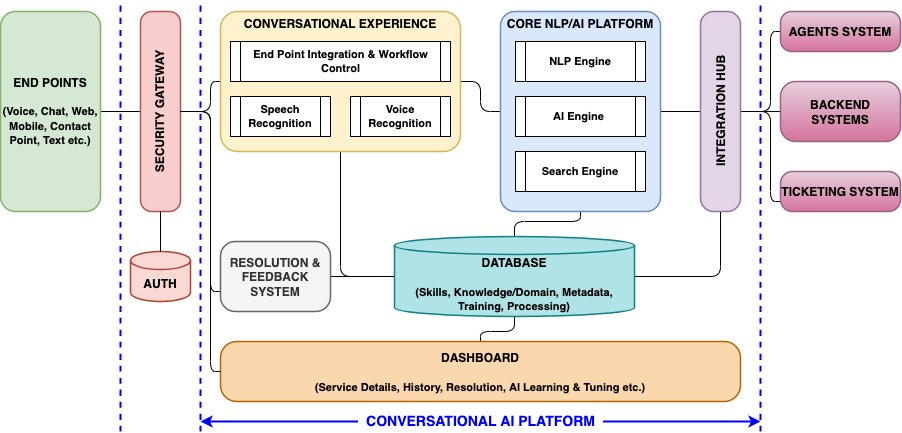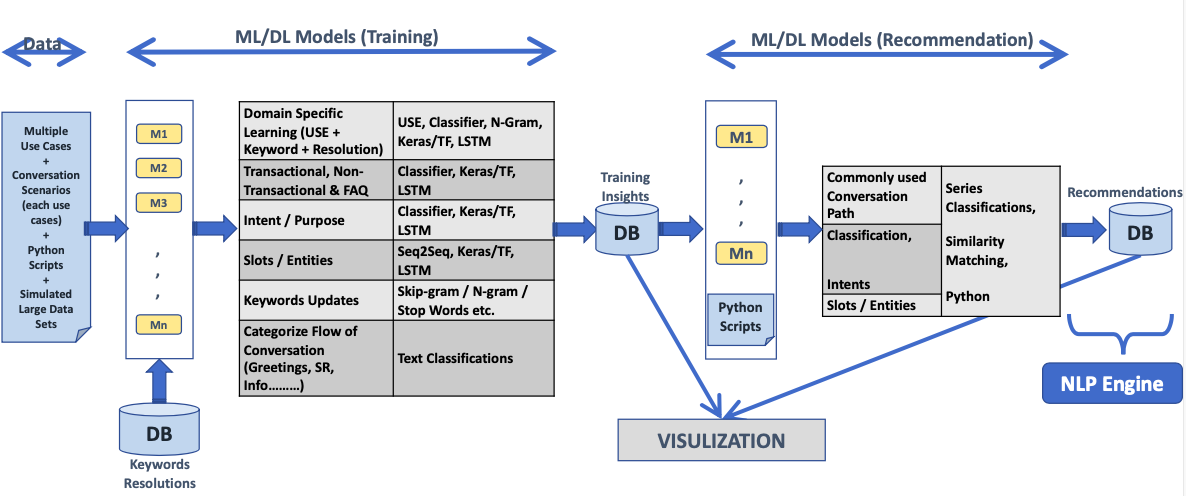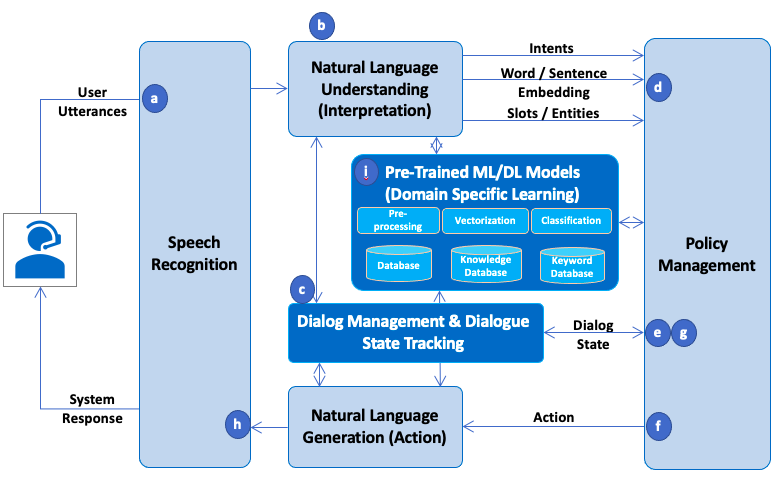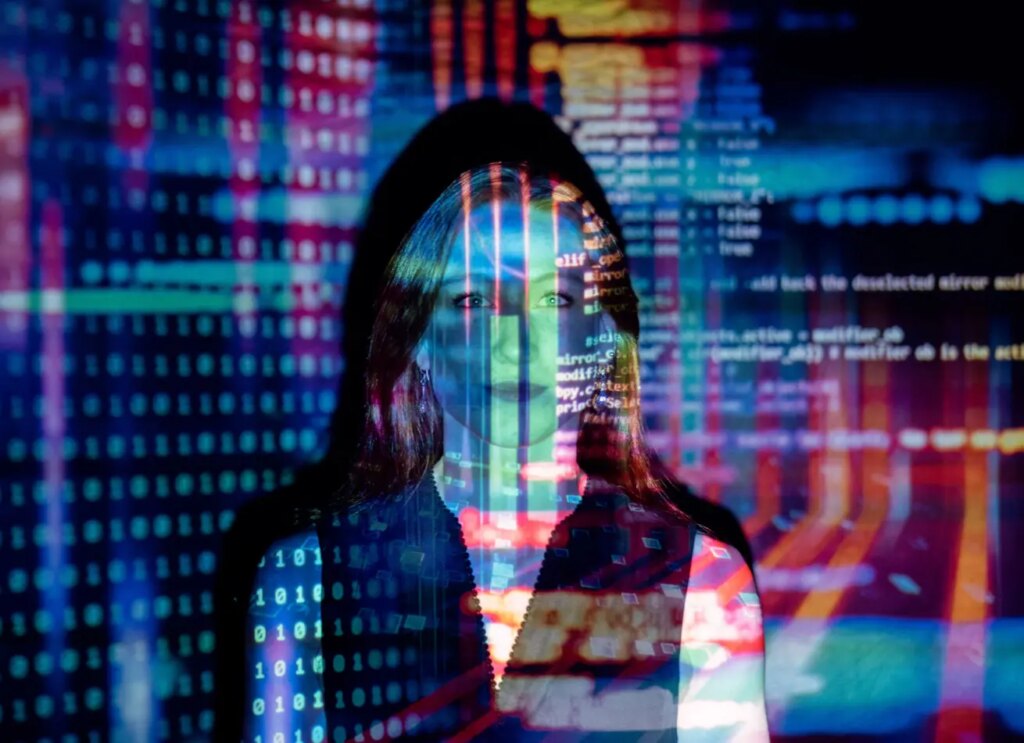The following article has been published in DZone and the link is
dzone.com/articles/conceptual-architecture-conversational-ainlp-basedConceptual Architecture: Conversational AI/NLP-Based Platform
Conceptual Architecture for Conversational Artificial Intelligence (AI) / Natural Language Processing (NLP) based Platform for Customer Support and Agent Services.
This document provides Conceptual Architecture for Conversational Artificial Intelligence (AI)/Natural Language Processing (NLP) based Platform for Customer Support and Agent Services. This document highlights:
- Traditional Conversational Platform and its limitations
- Key capabilities of AI/NLP-based Conversational Platform that are required to make the platform efficient, which addresses the end-to-end need
- Conceptual architecture or building blocks Conversational AI/NLP Platform to address the limitations
- High-level technology mapping of the conceptual architecture
- Benefits of the platform
Traditional Conversational Platforms and Limitations
Traditionally, many companies use an Interactive Voice Response (IVR) based platform for customer and agent interactions. The following diagram depicts typical IVR-based platforms that are used for customer and agent interactions.
- Customer dials Interactive voice response (IVR) access number for any queries or issues.
- IVR allows a computer to interact with humans through the use of voice and Dual-tone multi-frequency signaling (DTMF) tones input via a keypad. IVR allows customers to interact with a company’s host system via a telephone keypad or by speech recognition.
- IVR systems can respond with pre-recorded or dynamically generated audio to further direct users on how to proceed.
- IVR takes input, processes it, and returns a result, whereas an automated attendant just routes the calls.
- IVR systems also will get integrated with Business Applications through an API for fulfilling customer requests as well along with notifications.
- IVR systems will also get integrated with various departments such as Sales, Support, Enquiry, etc., for forwarding the customer request also integrating with ticketing systems.
- Long Waiting Queue in IVR to reach agents.
- No Options for quick issue resolution. Even for a small query have to go through various IVR menu options.
- To handle more customers, more Agents need to be onboarded and hence more cost.
- Agents’ involvement is more as customers reach out to agents after going through IVR and not finding the correct options.
- There is only a predefined menu and no flexibility.
Capabilities of AI/NLP Based Conversational Platform
The following capabilities that will be addressed in the platform are:-
- Virtual Assistant/ Smart Voice bot with Conversational AI Capabilities by integrating with voice, chat, web, mobile app, social contact points (such as Facebook, Twitter, WhatsApp), Text, Phone Gateway, etc.
- Handle various kinds of Voice Request which can be classified as,
- FAQs – These direct question and answers kind of scenarios
- Open Domain Questions & Answers – search through paragraph or page and answer any questions from that, such as Product Catalogue Search
- Fulfil request by getting a response from Backend Applications
- NLP and NLU, along with Dialogue State Management
- Configurable System for Fine-tuning the request/response
- FAQs – Add, Delete, Update
- Fine Tuning request/response which does not meet desired answers
- Updating FAQs, Intents/Slots Filling/Entities, etc. – Real Time or Periodically
- Call Handling and Management
- Logging, Resolution, Feedback
- Monitoring
- Reports on Interactions, Resolutions, Customer Satisfaction level, etc.
- Outbound call features to Customers – Some, time platform can handle the outbound calls to customers such as promotions, benefits, discounts, campaigns, etc.
- Integration with Backend Application for handling Voice requests to answer queries or any logging if required
- Domain Specific Knowledge Database so that can position for different industries
- Dashboard/Reports – Various dashboards and reports on resolution/feedback, request/response measurement/efficiency, call volumes and status, etc.
- Support Layered Architecture
Conceptual Architecture – Conversational AI/NLP Platform
Conversational Artificial Intelligence (AI), along with other technologies, will be used in the end-to-end platform. The following diagram depicts the conceptual architecture of the platform.
- End Points: Users can interact with the platform using any of the channels such as voice, chat, web, mobile app, etc.
- Security Gateway: The endpoint channel will be integrated with a security mechanism to authenticate the user. Generally, this existing security mechanism will be leveraged by integrating with a security gateway to provide authentication services.
- Conversational Experience:
- Speech Recognition (also called Automated Speech Recognition): This provides the capability to process human speech into written text format to recognize words the user says. Speech APIs enable developers to convert audio to text by applying powerful neural network models in an easy-to-use API. It can enable voice command-and-control, transcribe audio from call centers, and more.
- Language Detection & Translation: Generally, these APIs will translate languages and provide inputs Speech Recognition APIs for Voice to Text or Text to Voice formats.
- Voice Recognition: This is will be an advanced feature in the whole platform and a challenging one. Basically, this service recognizes the voice of the speaker. This will enhance the security features like voice biometrics and recognition and decoding of human speech patterns for automatic transcriptions and accurate commands.
- End Point Integration & Workflow Control: This process handles the integration of various channels and Workflow controls based on decisions to call respective actors.
- Core NLP/AI Platform: This is the combination of NLP and AI capabilities to handle the request effectively. AI Platform learning/training and recommendation engine for the NLP engine. In order to extract all the keywords, utterances, actions, intent, etc., of the conversation, AI Engine will be fed with historical data to extract this information and store it in the knowledge database. Please refer to the diagram below of the AI engine, some of the technology areas that can be used to build both learning/training and recommendation engines, which will become input to NLP modules.

Please refer to the diagram below of the NLP Engine functioning.

- User Utterances are received and passed to the Speech Recognition module, which converts Voice to Text
- The Text is received and passed to an NLU. Interpretation Modular converts it into a dictionary, including the Original Text, the Intent, Classifications, and Slot Filling.
- The Dialog Management keeps track of the Dialogue State of Conversation State.
- The Policy Management receives all the Interpretation data
- Policy Management also receives the current state of the conversation.
- The policy chooses which action to take next.
- The chosen action is logged in Dialogue State Management.
- NLG Module chooses the template response and passed it to the Speech Recognition module, which converts Text to Voice.
- Multiple ML/DL models are maintained along with the knowledge base of Domain Specific Learnings.
- Resolution & Feedback System: This module manages customer interaction details and the ticketing history. Only ticketing details metadata can be maintained if the platform is integrating with an external ticketing system. Generally, this will be a Web Application.
- Dashboard: This module will provide capabilities along with analytics such as service details, history, progress, resolution, etc. This can also provide details about the NLP/AI learning and accuracy of the details of the response so that this can become input for tuning the AI/NLP engine.
- Integration Hub: This layer helps establish integration with Transactional Processing Backend Systems, Agents systems, Ticketing systems, etc. We can use any of the Application or Database Integration tools along with Flask-based integrations.
- Database: This will hold all the information related to Keywords for NLP, Knowledge/Domain Specific learning/keywords, Metadata on trained models from AI/NLP Engine, Processed data from all the module
AI/NLP Based Conversational Platform Benefits
- Improved Customer Service – AI/NLP based platform, learning, and tuning of the customer request/response improves the customer satisfaction levels. As these platforms can efficiently understand the customer intents, helps in providing the faster resolution.
- Omni-Channel Presence – Customer can interact with platform with any of the channel and still will have tracking of the request/response irrespective of the channel they have used.
- Improved Agents Efficiency – For most of the direct request/response, agents involvement can be eliminated, and agents can spend more time on complex cases and by giving value to the customer and as well as company.
- Scalability – Companies can increase the Virtual Assistant as call volume increases more efficiently compared to scaling the agents in the traditional platforms.
- Reduced Operations Cost – With Smart-Self service options, human interactions can be reduced. Agent will get involved when call is gracefully transferred by Virtual Assistant to Agents. Also, Virtual Assistant can be scaled as when required depending on the call volumes.
- Increased Revenue – By proper use of Outbound call features, and Inbound call workflows, the platform can be leveraged Up-sell and Cross-sell services/product opportunities there by increasing revenue opportunities.




